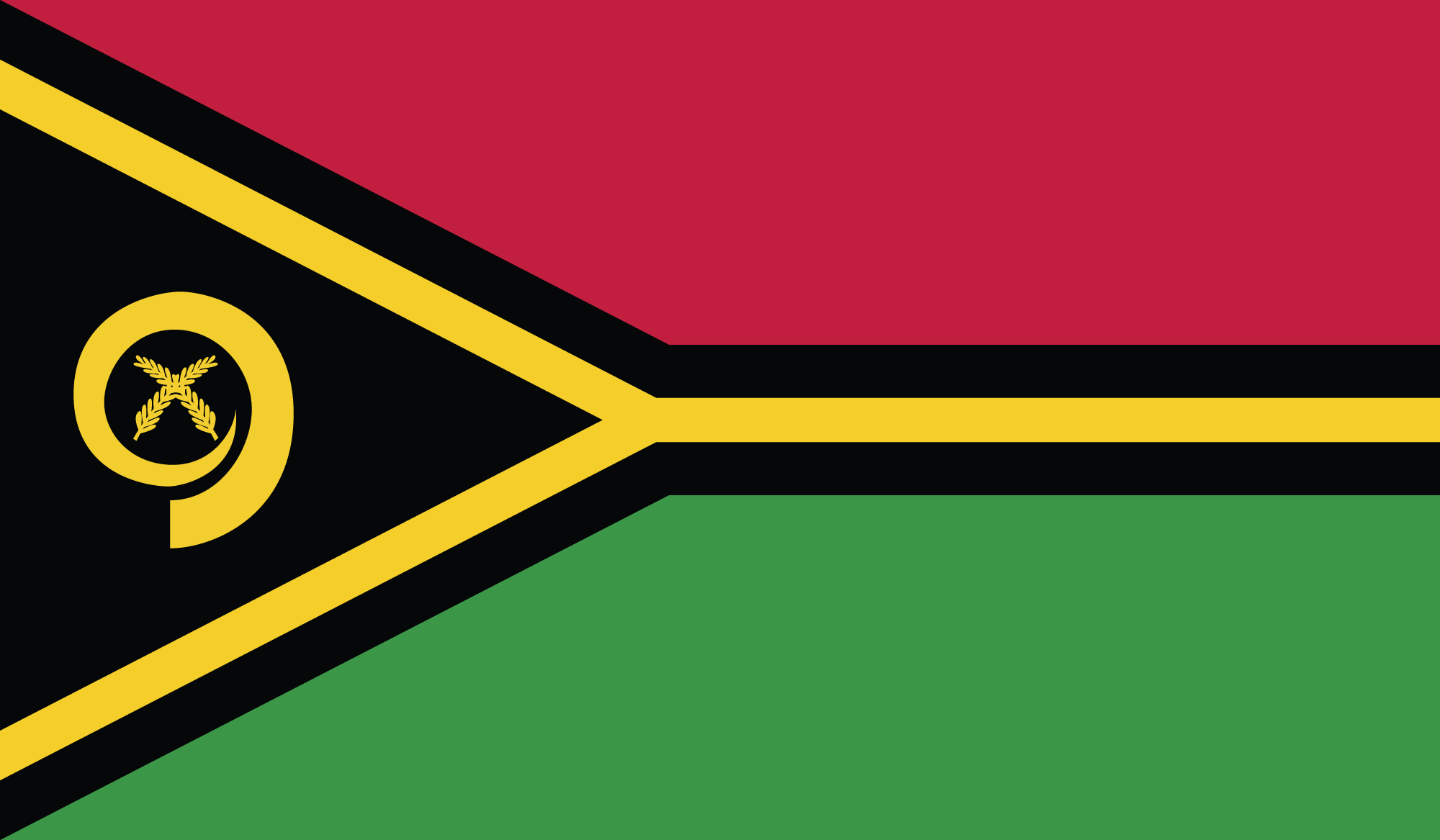Vanuatu << `vah` noo AH too >> is an island country that lies in the southwest Pacific Ocean. Vanuatu consists of 80 islands. The country’s largest islands are, in order of size, Espiritu Santo, Malakula, Efate, Erromango, and Tanna. Port-Vila, on the island of Efate, is the capital and ranks as the largest urban community in the nation. The town has a population of about 30,000.

From 1906 to 1980, the United Kingdom and France jointly governed the islands, which were then called the New Hebrides. In 1980, the islands became the independent nation of Vanuatu.
Government.
Vanuatu is a republic. A Parliament, whose members are elected by the people to four-year terms, makes the country’s laws. A prime minister, who heads the majority party in Parliament, runs the government with the aid of a Council of Ministers. Village, regional, and island councils handle local government affairs. The Parliament and the regional council presidents elect a president to a five-year term. The president’s role is chiefly ceremonial.

People.
Over 90 percent of Vanuatu’s people are Melanesians. Asians, Europeans, and Polynesians make up the rest of the population. About 75 percent of the people live in rural villages. Many village houses are made of wood, bamboo, and palm leaves. Port-Vila and Luganville—on Espiritu Santo—are the only urban communities. Over 100 languages are spoken in Vanuatu. Bislama, a type of Pidgin English that combines mainly English words and Melanesian grammar, is commonly used throughout the country (see Pidgin English). About 85 percent of the people are Christians and most of the rest practice local religions.

Land and climate.
The islands of Vanuatu form a Y-shaped chain that extends about 500 miles (800 kilometers) from north to south. Most of the islands have narrow coastal plains and mountainous interiors. Several have active volcanoes. The northern islands have a hot, rainy climate, with a year-round temperature of about 80 °F (27 °C) and annual rainfall of about 120 inches (305 centimeters). Temperatures in the southern islands range from about 67 to 88 °F (19 to 31 °C), and the yearly rainfall totals about 90 inches (230 centimeters). Vanuatu lies in an area where cyclones occur.
Economy
of Vanuatu is based on agriculture. Farmers grow fruits and vegetables; raise cattle, chickens, and hogs; and catch fish. Beef, cacao, and copra (dried coconut meat) are among the country’s leading exports. Manufacturing in Vanuatu centers on the processing of agricultural and fishing products. Tourism and offshore banking are also important to the economy. Small ships and airplanes serve as the main means of transportation among the islands. Vanuatu has few good roads and no railroads.
History.
Melanesians have lived in what is now Vanuatu for at least 3,000 years. In 1606, Pedro Fernández de Quirós, the commander of a Spanish expedition from Peru, became the first European to see the islands. The British explorer James Cook mapped the region in 1774 and named the islands the New Hebrides after the Hebrides islands of Scotland.
British and French traders, missionaries, and settlers began coming to the islands during the 1840’s. In 1887, the United Kingdom and France set up a joint naval commission to oversee the area. In 1906, the commission was replaced by a joint British and French government called a condominium.
After the United States entered World War II in 1941, the New Hebrides became a major Allied military base. United States troops built roads, bridges, and airstrips there. A movement for independence began in the islands during the 1960’s. The New Hebrides became the independent nation of Vanuatu on July 30, 1980.
In March 2015, Cyclone Pam devastated much of Vanuatu. The disaster left thousands of people without food or shelter.
